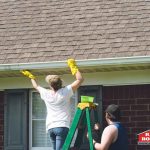6 Best Alternatives to Wood Shake Shingles for Long-Lasting Roofing
Homeowners love the rustic charm of wood shake shingles—but that aesthetic often comes with maintenance headaches, weather vulnerability, and higher long-term costs. Fortunately, today’s roofing technology offers smarter alternatives. If you’re looking to preserve the beauty of wood shake while improving durability, energy efficiency, and lifespan, you’ve got options. The best alternative to wood shake shingles depends on your priorities, such as fire resistance, longevity, or eco-friendliness. This guide explores the best alternatives to wood shake shingles, especially for homes in Michigan and Ohio where freeze-thaw cycles and storm seasons put roofing materials to the test.
Key Takeaways
- Wood shake alternatives offer greater fire resistance, weather durability, and lower maintenance
- Synthetic, asphalt, and metal roofing options mimic wood aesthetics without the drawbacks
- GAF-certified solutions provide added warranty and long-term performance for Midwest climates
- Alternatives fit a range of budgets, styles, and energy-efficiency needs
Why Homeowners Are Moving Away from Wood Shake
While the textured look of wood shakes adds warmth and dimension to a roofline, they’re vulnerable to moisture damage, fire risks, and insect infestations—especially in humid or storm-prone environments like Michigan and Northwest Ohio. Wood requires consistent upkeep, and cedar shingles often need maintenance or even replacement every few years without proper care, due to issues like moisture damage and wear. Many municipalities now have restrictions due to fire codes or insurance considerations. The good news? Modern materials now replicate the look of cedar shakes with superior performance.
Fire Safety Considerations: Protecting Your Home from the Top Down
When it comes to safeguarding your home, fire safety should be at the top of your roofing checklist—especially if you love the look of a cedar shake roof. While real cedar shakes and other natural wood roofing materials offer undeniable curb appeal and warm tones, they are highly combustible and can put your home at risk, particularly in dry climates or areas prone to wildfires. A traditional shake roof made from natural wood can ignite quickly, making fire resistance a critical factor for today’s homeowners.
Fortunately, there are more durable alternatives that deliver the rustic appearance of cedar shakes without the fire hazard. Metal roofs, for example, are naturally fire resistant and stand up to both heat and strong winds, making them a smart choice for regions where fire safety is a concern. Metal panels not only protect your home from external flames but also require less maintenance over the long run.
Composite shake and synthetic shake roofing materials are also excellent cedar shake roof alternatives. Made from recycled plastic and engineered to mimic the authentic wood grain of real cedar, these products offer impressive fire resistance and durability. Unlike real cedar shakes, composite shake options won’t dry out, crack, or become a fire risk as they age. Fiber cement is another solid product that combines the look of cedar shingles with superior fire resistance, making it ideal for homeowners who want both style and safety.
Even among asphalt shingles, there are options designed for fire safety. Some asphalt shingles carry a Class A fire rating, meaning they can withstand severe fire exposure and help protect your home’s exterior. However, not all asphalt shingles are created equal, so it’s important to choose a roofing product that meets the highest fire resistance standards.
Proper installation is just as important as the roofing material itself. A well-installed roof deck, with secure fastening and quality underlayment, can help prevent fire from spreading. Regular maintenance—such as cleaning debris from your roof and gutters, and inspecting for damaged or missing shingles—also plays a key role in fire safety.
For homeowners in dry climates or areas with frequent high winds, choosing a fire-resistant roofing material is essential. Metal roofs, composite shake, and fiber cement all offer peace of mind, combining the rustic appearance of cedar shakes with the fire safety and durability modern homes demand.
By prioritizing fire resistance, proper installation, and regular maintenance, you can enjoy the timeless look of a cedar shake roof—without the worry. Whether you’re building new or have recently replaced your roof, investing in fire-resistant roofing materials is a smart way to protect your home from the top down.
GAF Designer Shingles: Beauty Meets Durability
GAF offers several high-end asphalt shingle lines designed to emulate wood shake—including the GAF Timberline® HDZ and GAF Glenwood® shingles. These products combine layered dimension with wind, impact, and superior hail resistance, making them ideal for Michigan winters and spring hailstorms. As a GAF 3-Star President’s Club contractor, Rapid Roofing installs these products efficiently and with enhanced warranties and expert craftsmanship.
GAF designer shingles are engineered to last longer and require less frequent replacement than traditional wood shakes.
Synthetic Shake Roofing: Realistic Look, Less Maintenance
Synthetic shake roofing—made from engineered polymers or rubber composites—delivers the rich grain of real cedar with far greater durability. Leading brands like DaVinci Roofscapes and CeDUR offer Class A fire ratings, fade resistance, and impact protection. The CeDUR product is a proprietary synthetic roofing material that is light weight, easy to install, fire resistant, and expertly mimics the look of natural cedar shakes. These materials are also light weight and well-suited for both new construction and reroofing projects across Ann Arbor, Toledo, and Canton.
Synthetic shake roofing is low maintenance compared to traditional wood shakes, requiring minimal upkeep while maintaining its appearance. These products replicate the look of individual shakes, providing a more authentic and rustic effect that closely resembles natural cedar.
Standing Seam Metal Roofing: Modern Style with Wood Alternatives
If you’re open to a contemporary twist, standing seam metal roofs offer a sleek, wood-free look with incredible durability. These roofs are energy efficient thanks to their high reflectivity, which helps keep homes cooler and can reduce energy costs. Available in finishes that mimic natural tones, metal roofing excels in snow shedding and wind resistance—key for Southeast Michigan’s winter storms. With minimal maintenance and a 50+ year lifespan, it’s a long-term alternative gaining popularity among homeowners seeking sustainability and style. A new metal roof is a modern, high-quality upgrade option for those who want both performance and aesthetic appeal.
Fiber Cement Shake Siding: Blending Roof and Wall Aesthetics
James Hardie, known for its premium siding, also manufactures shake-style panels that can complement synthetic or architectural shingle roofs. If you want a cohesive design where roofing and siding echo each other, fiber cement offers an integrated, fire-resistant solution with visual impact and long-term performance. Fiber cement shake siding is available in a full range of colors and finishes to match any home’s exterior, enhancing curb appeal and allowing for personalized style. Additionally, shake tile is another durable option for those seeking the look of cedar shakes with added longevity.
CTA: Learn more about our James Hardie siding and roof system compatibility.
Composite Shingles: Balanced Cost and Performance
Composite shingles, made from a mix of fiberglass, asphalt, and recycled materials, strike a balance between performance and price. They resist algae growth, cracking, and curling—common issues for wood shakes in humid or icy Midwest climates. Brands like CertainTeed and Malarkey offer shake-style profiles that look premium without the premium upkeep.
Composite shingles can closely mimic the appearance of real cedar shake and real cedar shingles, providing the authentic wood grain texture and rustic look of traditional materials. Unlike real cedar shake, which requires regular maintenance and more frequent replacing due to its limited lifespan, composite shingles offer a longer-lasting solution with less need for replacing.
In addition to composite shingles, concrete and slate are also high-end alternatives to wood shake, offering exceptional durability, a premium appearance, and, in the case of concrete, environmentally friendly and recyclable options.
FAQs: Alternatives to Wood Shake Shingles
Q: Are synthetic shakes more expensive than real wood? Yes, initially. But they save on long-term maintenance, repairs, and insurance—making them cost-effective over time.
Q: What roofing materials are best for Michigan winters? Architectural asphalt shingles, metal roofing, and synthetic shakes all perform well in freeze-thaw conditions and heavy snowfall.
Q: Can I still get a natural look without using real wood? Absolutely. Today’s shingles replicate wood grain textures and tones with amazing accuracy, enhancing the appearance of your house and complementing a variety of house styles.
Q: Do wood shake alternatives qualify for energy rebates or insurance discounts? Yes—many synthetic and Class A-rated roofing systems may help with insurance and energy efficiency incentives, which is especially appealing to the homeowner seeking reliable and cost-effective solutions.
Q: How long do alternatives to wood shakes typically last? Synthetic and composite options can last 30–50 years or more, depending on installation quality and manufacturer.
Ready to Upgrade Your Roof?
If you’re considering alternatives to wood shake shingles, Rapid Roofing offers certified installations, free estimates, and trusted recommendations backed by over 25 years of experience. Whether you’re in Sterling Heights, Ypsilanti, or Perrysburg, our team is ready to help you choose a roofing system that looks great and performs even better.
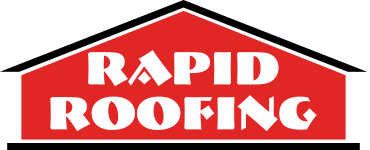

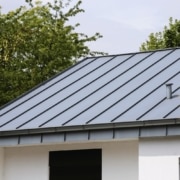
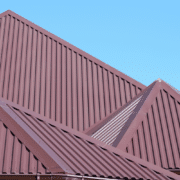
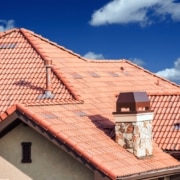

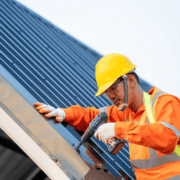
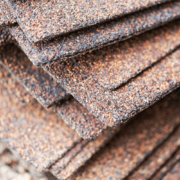
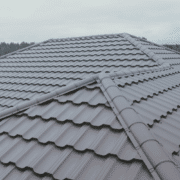
 Residential Roofing
Residential Roofing Storm Damage
Storm Damage Multi-Family Homes
Multi-Family Homes